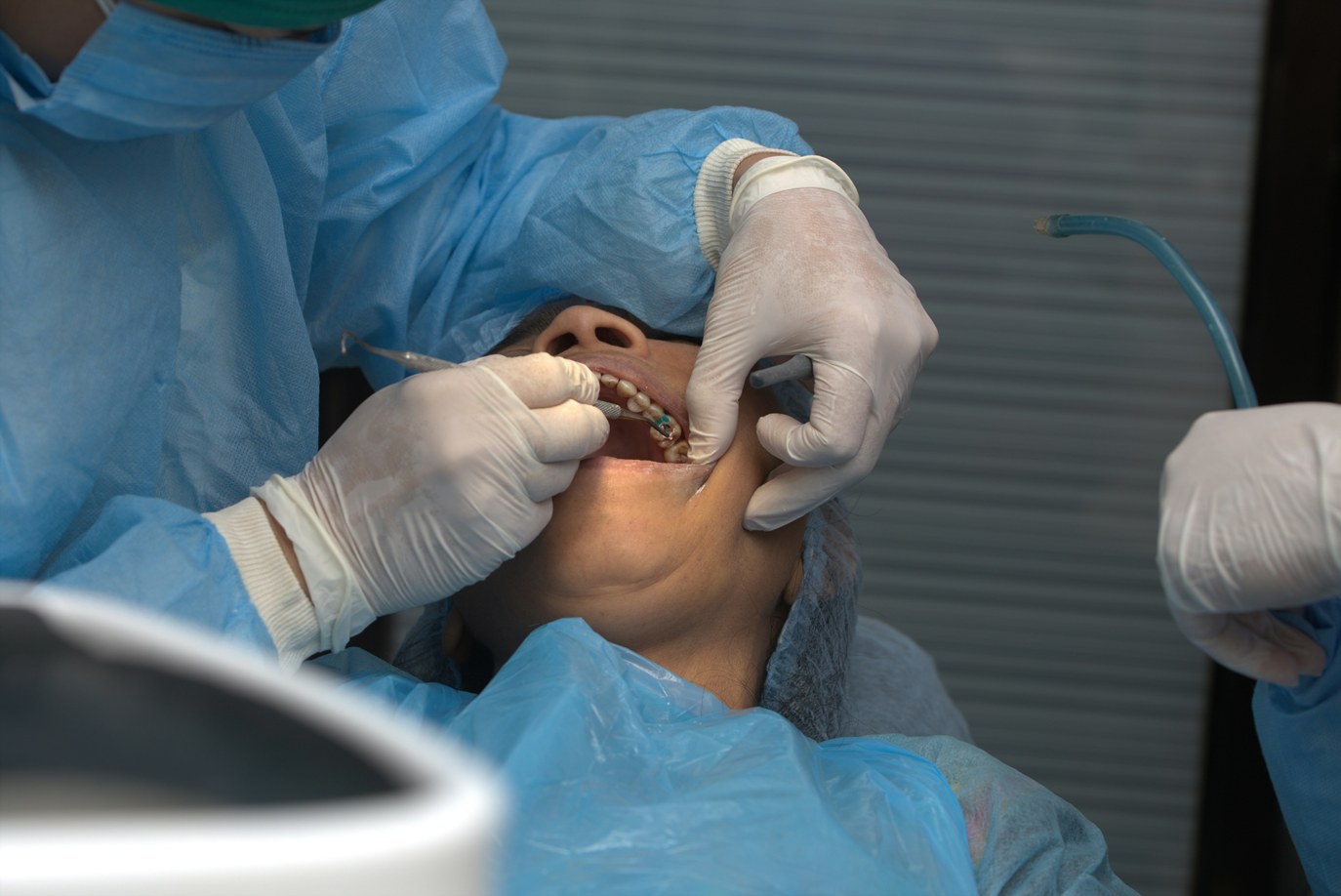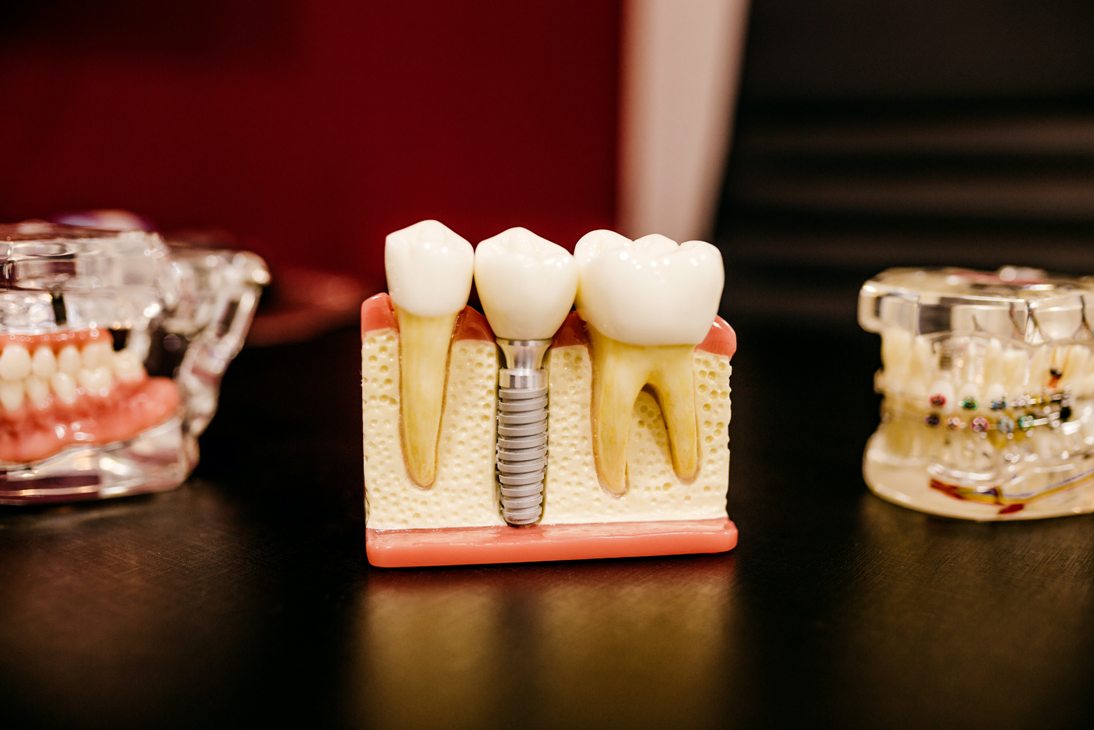Dental Surgery
S. WARD ECCLES, D.D.S.
Welcome New Patients
About Us
Dental Surgery the Biological Way
At our practice, dental surgery is approached through a biological perspective—one that respects the body’s natural ability to heal and regenerates tissue in a safe, supportive environment. Whether it’s a tooth extraction, cavitation surgery, ridge preservation, or bone grafting, our focus is not just on removing a problem but on creating the conditions for optimal healing and long-term oral and systemic health.
A key principle of our approach is preparing the body before surgery. Healing begins long before the procedure itself. We guide patients to optimize nutrition, hydration, sleep, and lifestyle, ensuring that the immune system is robust and inflammation is minimized. Supportive therapies like red light photobiomodulation and platelet-rich fibrin (PRF) are integrated to stimulate tissue repair and enhance circulation, giving your body the tools it needs to recover more efficiently.
We also recognize that dental surgery can be an emotional experience. Losing a tooth—or addressing areas of ischemic bone—can feel significant. Each surgical plan is tailored to your unique anatomy, health status, and goals, with careful attention to minimizing trauma, preserving healthy tissue, and ensuring that the jaw remains strong and functional for years to come.
Prepare the Terrain (and Support Recovery)
Healing begins long before the first incision. In biological dentistry, we focus on preparing the body—or “terrain”—to optimize surgical outcomes.
Tooth Removal
Deciding to remove a tooth is never taken lightly. In biological dentistry, extraction is considered only when it is in the best interest of the body’s overall health.
Cavitations
Cavitations, also known as partial ostectomy or sequestrectomy, are areas of poorly healed or ischemic bone that can form after a tooth extraction.
Ridge Preservation
Ridge preservation and bone grafting are biological strategies designed to maintain the natural contours of the jaw, support future restorations, and promote optimal healing.
Options for Replacing a Tooth
Prepare the Terrain (and Support Recovery)
Healing begins long before the first incision. In biological dentistry, we focus on preparing the body—or “terrain”—to optimize surgical outcomes. A well-supported body is better equipped to manage inflammation, fight infection, and regenerate tissue, making recovery faster, gentler, and more predictable.
The foundation starts with lifestyle essentials: adequate sleep, balanced nutrition, proper hydration, gentle movement, and stress management. These simple steps significantly improve immune function and tissue regeneration.
Targeted supplementation before, during, and after surgery supports collagen synthesis, bone healing, and a balanced immune response. Lymphatic support and gentle movement help the body remove metabolic byproducts efficiently, reducing post-operative discomfort.
Red light therapy (photobiomodulation) enhances circulation, stimulates cellular repair, and reduces swelling, while PRF provides growth factors that accelerate healing. Recovery is further supported by oral care kits like StellaLife, which soothe tissues, reduce inflammation, and protect the surgical site.
By preparing the body in advance and supporting it throughout recovery, we create the conditions for predictable, effective healing and long-term oral and systemic health.
Tooth Removal

Deciding to remove a tooth is never taken lightly. In biological dentistry, extraction is considered only when it is in the best interest of the body’s overall health. Teeth that are non-vital, heavily compromised, or previously treated with root canal therapy can harbor bacteria and toxins that may affect systemic wellness. Removing such teeth carefully can prevent lingering inflammation and improve long-term outcomes.
We approach extractions with gentle, compassionate care, guiding patients through each step and providing support to ensure the experience is comfortable and reassuring. Techniques prioritize minimal trauma, preserving healthy bone and gum tissue while laying the foundation for optimal healing.
For teeth with roots near the sinus or complex anatomy, we follow strict biological surgical protocols and collaborate with specialized surgeons when necessary. Removing a tooth properly supports whole-body health by eliminating hidden sources of inflammation and infection. Combined with pre- and post-operative care, including nutrition, supplementation, lymphatic support, and red light therapy, this approach creates the ideal environment for healing and long-term wellness.
Cavitations (aka ONJ, ischemic bone, or NICO)
Cavitations, also referred to as partial ostectomy or sequestrectomy, are areas of poorly healed or ischemic bone that can develop after a tooth extraction or trauma. While these sites may not always cause noticeable symptoms, they can harbor anaerobic bacteria, toxins, and inflammatory byproducts, creating a hidden source of systemic stress. Over time, cavitations can contribute to chronic inflammation, immune dysregulation, fatigue, and other subtle health issues.
Identifying and treating cavitations is a critical component of biological dental care. Standard X-rays may not always reveal these areas, so we use advanced 3D cone beam imaging to locate and evaluate the extent of ischemic bone. Once identified, the diseased tissue can be gently removed through cavitation surgery, a procedure designed to preserve surrounding healthy bone and soft tissue while eliminating infection and necrotic material.
The biological approach to cavitation surgery goes beyond simple removal. Pre-operative preparation ensures the body is optimally supported, with attention to nutrition, hydration, sleep, and lifestyle factors. Targeted supplements and anti-inflammatory strategies help reduce systemic stress and prime the immune system for healing. Lymphatic support and gentle movement encourage the body to efficiently remove metabolic byproducts, while red light therapy (photobiomodulation) stimulates circulation and cellular repair. Together, these measures create the ideal environment for recovery and regeneration.
During surgery, the diseased bone is carefully excised, and regenerative techniques such as PRF (platelet-rich fibrin) may be applied to enhance healing. This biologically informed approach accelerates tissue repair, minimizes inflammation, and reduces post-operative discomfort. After surgery, we continue to support the body with a structured recovery plan, which may include oral care kits, nutritional guidance, and continued light therapies to optimize outcomes.
Cavitation surgery is not merely a dental procedure; it is an opportunity to remove hidden sources of chronic inflammation and restore balance to the body. Patients often report improvements in energy, immune function, and overall well-being after addressing these previously overlooked areas. By combining precise surgical technique with evidence-based, holistic support, we provide care that respects the body’s innate healing ability while resolving underlying oral health challenges.
Understanding cavitations and treating them thoughtfully is a key part of maintaining both oral and systemic health. At our practice, we prioritize gentle, effective intervention paired with comprehensive biological support to help each patient achieve the best possible long-term outcomes.
The International Academy of Oral Medicine and Toxicology (IAOMT) recognizes cavitations as a significant concern in biological dentistry. Their 2023 position paper, developed in collaboration with clinicians and researchers, provides a comprehensive analysis of jawbone cavitations, emphasizing the importance of accurate diagnosis and appropriate treatment IAOMT.
Ridge Preservation: Platelet-Rich Fibrin (PRF) & Bone Grafting

After a tooth is removed, the surrounding bone can begin to shrink or resorb, potentially affecting both function and appearance. Ridge preservation and bone grafting are biological strategies designed to maintain the natural contours of the jaw, support future restorations, and promote optimal healing. By carefully managing the extraction site, we help the body regenerate bone and soft tissue in a way that respects its natural healing processes.
A central component of our approach is Platelet-Rich Fibrin (PRF). PRF is a second-generation platelet concentrate rich in growth factors that stimulate cellular repair, enhance circulation, and accelerate tissue regeneration. Applied directly to the surgical site, PRF supports both soft tissue and bone healing, reducing inflammation and improving recovery outcomes. Scientific studies demonstrate that PRF encourages faster, more predictable regeneration compared with standard healing alone.
We also use biocompatible bone graft materials, such as synthetic grafts that integrate seamlessly with the body’s own bone. These grafts act as a scaffold for new tissue growth, providing structural support while the body rebuilds the area naturally. Combining PRF with these grafts creates a synergistic environment for bone regeneration, preserving the ridge’s shape and strength and preparing it for future procedures, such as dental implants.
The biological approach to ridge preservation emphasizes minimally invasive techniques, careful handling of tissue, and the reduction of post-operative inflammation. Pre- and post-operative support—nutritional optimization, hydration, lymphatic movement, and red light therapy—ensures the body is fully prepared to regenerate effectively. By addressing both the surgical site and the overall health of the patient, we enhance healing and long-term oral outcomes.
Ultimately, ridge preservation and bone grafting are more than procedural steps—they are an investment in the long-term health and functionality of the jaw. Our goal is to maintain natural bone structure, promote efficient regeneration, and support the body’s innate healing capabilities. By integrating precise surgical techniques with biologically supportive strategies, we provide patients with safer, more effective, and longer-lasting outcomes.
Options for Replacing a Tooth
Replacing a missing tooth is more than an aesthetic choice—it is an important step in maintaining oral function, jawbone health, and overall well-being. In biological dentistry, we consider options that support the body’s natural healing processes, preserve surrounding tissues, and minimize long-term complications.
Removable options include temporary solutions like a stayplate or flipper, partial dentures, or full dentures. These can restore function and appearance quickly, while allowing the tissues to heal fully after an extraction or grafting procedure. Removable options are often lighter on the body, non-invasive, and easy to adjust as the jaw remodels during recovery.
Fixed options provide long-term stability and include dental bridges, Maryland bridges, or dental implants. Bridges can restore function by anchoring to adjacent teeth, while implants—particularly ceramic or zirconia implants—offer a biologically compatible alternative to traditional metal implants. Non-metal implants integrate with the bone, supporting jaw health while avoiding potential immune reactions. Fixed solutions maintain proper bite alignment, prevent adjacent teeth from shifting, and help preserve the jawbone over time.
When choosing a replacement, we consider the patient’s overall health, jaw anatomy, and personal goals. The timing of the restoration is also critical: performing the procedure after ridge preservation or bone grafting ensures a solid foundation for the replacement and reduces complications. Biological strategies, including the use of PRF, optimal nutrition, and supportive therapies, enhance healing and maximize the success of the chosen replacement.
Ultimately, the right tooth replacement is a balance between function, aesthetics, and biological compatibility. Our approach emphasizes options that respect the body’s natural regenerative abilities, support systemic health, and create predictable, long-lasting outcomes. By carefully selecting the method that best fits your needs and providing guidance throughout the healing process, we help ensure that your oral health remains strong, resilient, and aligned with your overall wellness.

Biological Dentistry
Using science-based, biological techniques, technologies, and materials for your oral and overall health
Family Dentistry
Establishing preventative dental care routine and restorative treatment options for the entire family
Safe Mercury Removal
Replacing amalgams with non-toxic filling materials while safely capturing released mercury
Root Canal
Emphasizing a biological approach to diagnosing and treating infected teeth
Gum Therapy
Addressing periodontal “gum” disease systemically and non-surgically
Cosmetic Dentistry
Restoring and replacing natural teeth using a conservative approach with non-metal materials
Dental Surgery
Our dental surgery approach respects the body’s natural ability to heal
TMJ Therapy
TMJ dysfunction causes jaw pain, facial tension, headaches & neck discomfort
Ozone Therapy
A safe, natural treatment to disinfect & reduce inflammation

